Bally Astrocade
Top 10 Best Bally Astrocade Games of All Time!
The Astrocade was developed by Midway – who acted as the video game arm of Bally in the ’70s and ’80s. Originally known as the Bally Home Library Computer, the console was offered through mail order in 1977 but didn’t actually ship until the following year. The machine was renamed Bally Professional Arcade by the time it shipped, but it had little retail exposure outside of computer stores. When Bally decided to exit the market, a corporate buyer from Montgomery Ward stepped in and sold the system as the Bally Computer System before finally changing its name to the Astrocade in 1982. The system was notable for its powerful graphics and impressive sound capabilities when it launched, but the Astrocade had too many false starts to make a real impact. The Astrocade was renamed three times and was sold for seven years by various distributors, but only 28 games were officially released for the console.
10
Bally Pin
1979
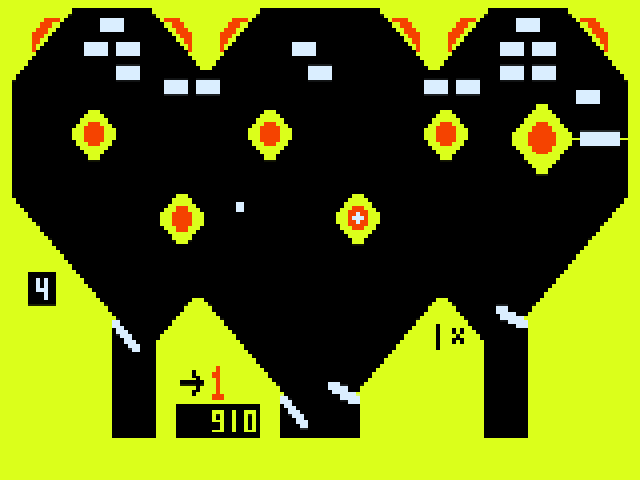
Bally Pin was initially released in 1979 but the name was changed to Astrocade Pinball in 1981. It can be difficult to replicate the pinball experience in a video game, and this is true of Bally Pin as well. The physics are pretty primitive and feel completely unrealistic at times. (The game actually lets players catch the ball and balance it on the end of the flipper.) Bally Pin features two different tables (each with four flippers) but they are sparsely populated and not visually interesting. There are a few large bumpers to be mindful of, but there aren’t any ramps, gates, or holes to speak of. The tables provide players with a number of simple drop targets to aim for, and the game almost starts to feel like Breakout as you try to clear them all out. Despite the primitive look and feel of Bally Pin, it’s actually a lot of fun. My favorite aspect about the game is that it lets you use two separate controllers for the left-and-right flippers. This makes the game feel more like a standard pinball table and helps Bally Pin stand out from other early pinball video games.
9
Brickyard/Clowns
1978
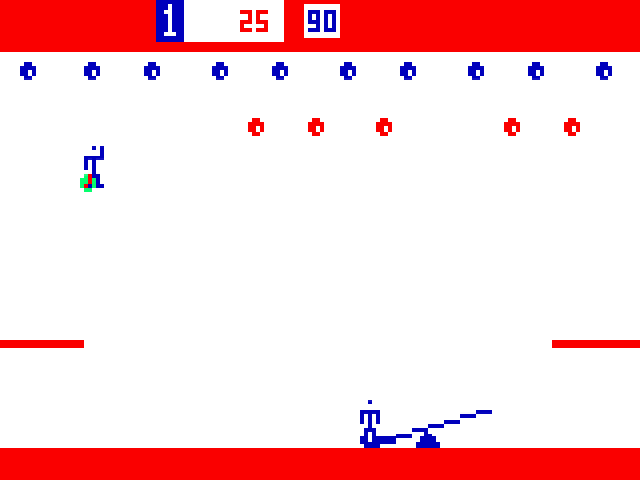
Brickyard/Clowns is technically a compilation, but I’m including it on this list since neither game was released on its own. Brickyard is a basic, bare-bones Breakout clone. For the uninitiated, the basic goal in Breakout is to repeatedly bounce a ball against a series of colored bricks in an attempt to break through all of them. The physics in Brickyard are a little different from other Breakout clones in that it’s possible to gently lob the ball into the air by catching it with the middle of your paddle. This gives you the opportunity to slow things down when things start getting intense. On the other half of the cartridge, Clowns is an obvious tribute to Atari’s Circus. The game challenges players to move a see-saw back and forth along the bottom of the screen in order to catch jumping clowns and launch them into the air to collect decorative balls. The “bouncing clown” genre wasn’t nearly as popular as Breakout clones and Clowns is a little on the easy side, but it’s a nice change of pace if nothing else. Sadly, the presentation in Brickyard/Clowns is a little lazy and the lack of options is disappointing. Even though neither game is a great representation of the console’s technical abilities, both games control well and make good use of the Astrocade’s analog dial. At the end of the day, it’s hard to complain about getting two games in one.
8
Astro Battle
1979
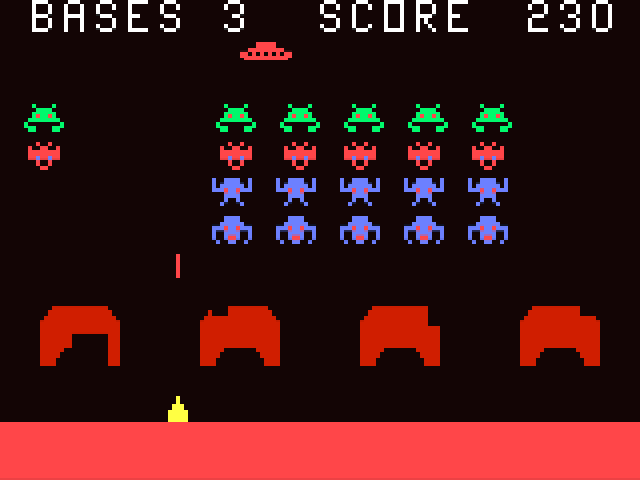
To say that Space Invaders was one of the most successful arcade games ever released would be an understatement. The game was so popular that it actually caused coin shortages in Japan! The unprecedented success of the arcade game made it an ideal killer app for the Atari 2600 in 1978, and it only makes sense that Bally would want a version of their own. An unlicensed version of Space Invaders was released on Bally’s console in 1979, but the game was quickly renamed Astro Battle. It was a blatant clone regardless of what the title screen said. The entire game consists of shooting down alien spaceships and periodically seeking cover behind large barns. Astro Battle on the Astrocade doesn’t feature quite as many gameplay modes as Space Invaders on the 2600, but it does a great job of capturing the spirit of the arcade game it was based on. The aliens are alive with color, the game is fast, and controls are responsive. The biggest downside is how abruptly the game ends. After finishing off the sixth wave of fighters, the game ends suddenly and immediately resets to the menu screen. This is annoying if you want to play the game for more than a few minutes at a time. Astro Battle didn’t exactly make the same splash as Space Invaders did on the Atari 2600, but no console from the era would have been complete without their own take on the classic arcade game.
7
Cosmic Raiders
1983
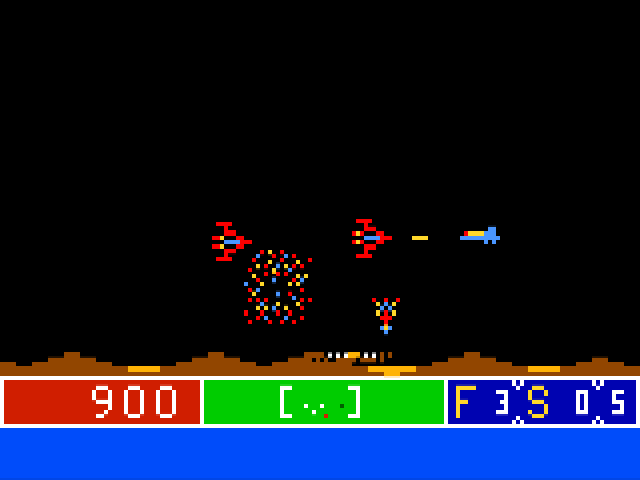
The Astrocade was home to many renamed arcade ports and blatant knock-offs, but Cosmic Raiders is merely inspired by a popular arcade game. Like Defender, Cosmic Raiders is a side-scrolling shooter that tasks players with defending a planet from invading alien forces. Players are free to move left or right on the screen and a handy radar alerts them to their enemies’ locations. While Defender challenged players to rescue civilians, Cosmic Raiders simply requires players to shoot down enemy fighters and bombs. There are multiple enemy types to contend with. Some will try to shoot you down while others are content to run into you kamikaze style. You can usually dispose of your enemies with basic lasers, but players will also have the chance to turn themselves into flying battering rams through the use of a shield item that grants temporary invincibility. Cosmic Raiders take a lot of cues from Defender, but it’s nice to see a high profile title on the Astrocade that has its own identity.
6
Solar Conqueror
1983
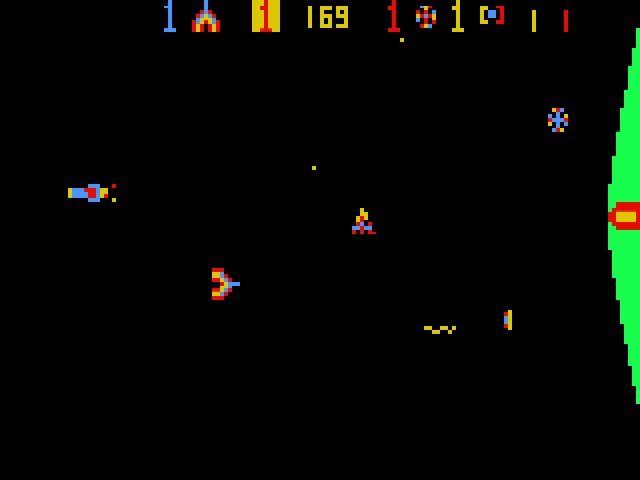
Most space-based shooters from the late ’70s and early ’80s gave players the objective of defending planets from invading forces. Solar Conqueror put players on the other side of the battle lines and challenged them to destroy various planets. Although the primary objective is radically different from most games in the genre, the basic gameplay in Solar Conqueror is standard fare for the most part. The game mostly consists of flying around, shooting down rival ships, destroying ground-based missile launchers, and contending with asteroids and deadly satellites. The ship controls are reminiscent of Atari’s Asteroids and allow players to fire in eight different directions. By using their momentum to their advantage, players can perform drifting maneuvers that effectively allow themselves to move in one direction and fire in another. The missiles that are launched from the planet’s surface will occasionally fire their own missiles and the aforementioned satellites will deploy dangerous electrical fields. The game can feel a little claustrophobic at first, but no one said conquering planets was easy.
5
Muncher
1983
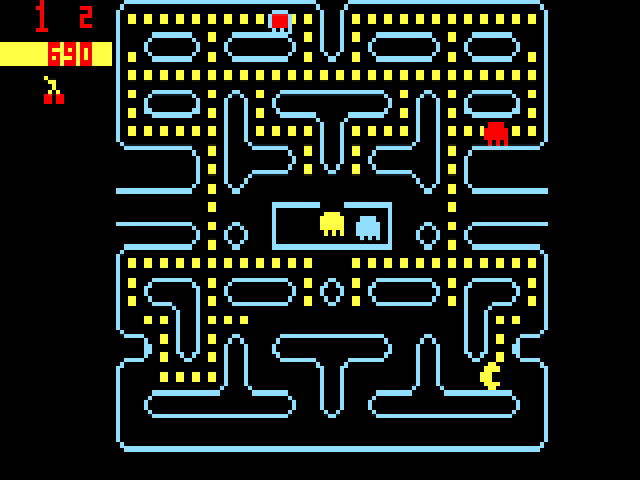
Muncher might look like a cheap Pac-Man clone, but the games are actually quite different. Pac-Man is about a circular character who navigates through mazes, avoids ghosts, and eats dots. In contrast, Muncher is about a circular character who navigates through mazes, avoids ghosts, and munches on dots. See? It’s completely different! Muncher might be a Pac-Man knock-off, but at least it’s a good one! It’s not exactly a pixel-perfect port, however. Due to the low resolution of the Astrocade, everything in the game appears to have been shrunken down. It almost feels like you’re playing Ms. Pac-Man on the Atari Lynx. The tiny characters still have a lot of personality though, and the graphics are flicker-free (which is more than I can say of the Atari 2600 version of Pac-Man). The biggest difference between Muncher and Pac-Man is that Muncher allows players to stop the movement of their character when they let go of the joystick. This sounds like a small detail, but the ability to stop and wait helps Muncher stand out.
4
Dog Patch
1980
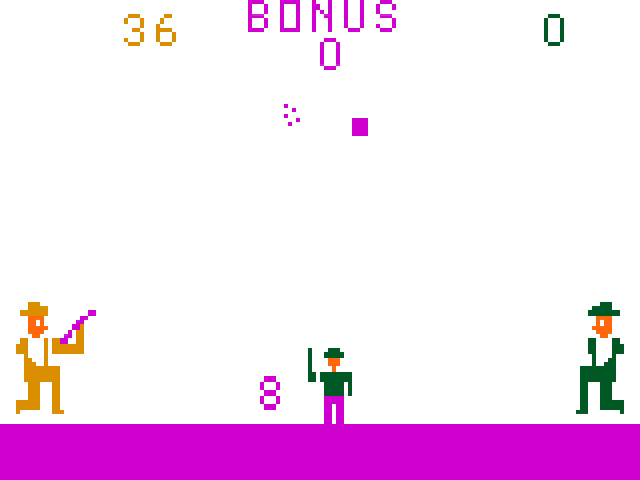
Dog Patch challenges two gun fighters positioned on opposite sides of the screen to shoot a tin can out of the air before their opponent. It’s a simple concept, but the Astrocade’s unique controller makes the game feel special. The Astrocade’s controller consisted of a pistol-style grip with a trigger switch, so it was ideal for a shooting game. Instead of a typical joystick, the Astrocade’s controller had a small knob on top of the controller that could be moved in various directions or rotated like a dial. In Dog Fight, moving this dial laterally will move your characters left or right on the screen while rotating it will adjust the aim of the gun fighters. Dog Patch requires a lot of speed and precision and the game wouldn’t really be possible with any other control scheme. The game allows players to challenge computer-controlled opponents, but it was really meant to be played with another person. It’s not the best-looking game on the system and it’s certainly not the best-sounding, but no game makes better use of the Astrocade’s unusual controller than Dog Patch.
3
Space Fortress
1981
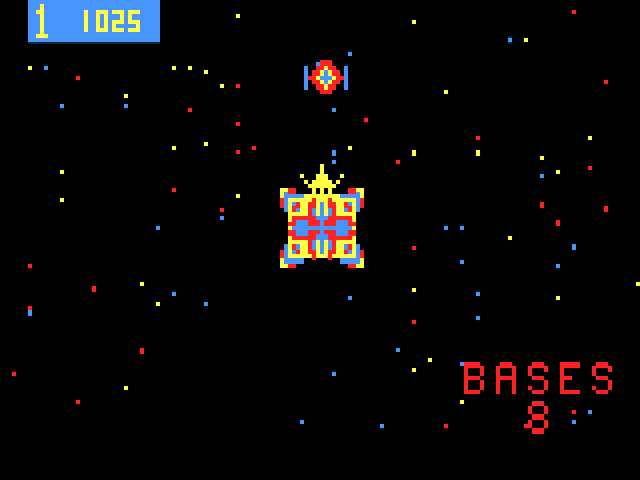
Space Fortress is the Astrocade’s version of Space Zap and yet another renamed arcade port. The goal of the game is to protect a base located in the center of the screen from enemy fighters that approach from the four cardinal directions. Players can’t dodge enemy attacks and don’t have to worry about aiming. Instead, they just point in the direction of the enemy and fire away. When players inevitably let their guard down and leave their base open to enemy fire, they are treated to over-the-top explosions of color seldom seen outside Jackson Pollock paintings. Although the concept is simple, the number of enemies the game throws at you borders on the ridiculous. The game is so intense that it actually becomes physically fatiguing. This is pronounced on the Astrocade since it uses a different control scheme from the arcade. (The arcade version used four directional buttons and a separate fire button, while the Astrocade requires you to aim with a joystick and fire with a trigger.) In any regard, there are very few games (from any era) that rely as heavily on reflexes. More so than any other game on the Astrocade, Space Fortress requires complete concentration in order to succeed.
2
Galactic Invasion
1981
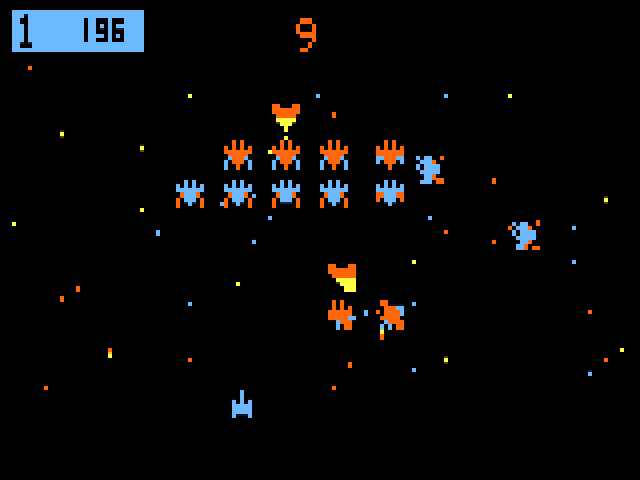
Much in the same way that Astro Battle was originally released as Space Invaders, Galactic Invasion was released as Galaxian before its name was changed. Galaxian was Namco’s attempt to cash in on the success of Space Invaders – and a successful attempt it was! The arcade version of Galaxian was noteworthy for its use of multi-colored sprites and animated explosions, and these elements were carried over into Galactic Invasion on the Astrocade. The manner in which the aliens would periodically break from formation to dive-bomb the player added a sense of drama to the genre, and this was also true of Galactic Invasion. The game doesn’t feature quite as many aliens as Galaxian did, but you won’t complain when there are five or six enemies dive-bombing you at the same time. The waves of enemy fighters are absolutely relentless, and Galactic Invasion is one of the fastest-moving games of its day. After clearing the screen of aliens, a new armada will immediately show up to take its place. No breathing room is given, and the intensity is unmatched by any console-based shooter of the era.
1
The Incredible Wizard
1982
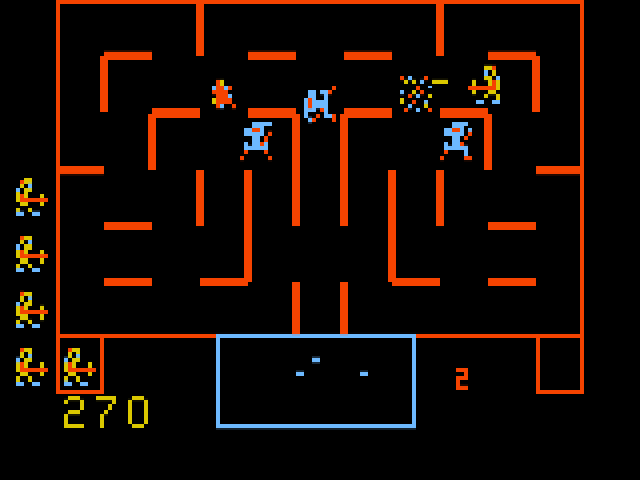
The Incredible Wizard was the Astrocade’s take on Wizard of Wor. In the game, players explore various maze-like dungeons and attempt to eliminate all the monsters that reside within them. The layouts of the mazes change as players progress through the game and the monsters become increasingly dangerous. Some of the monsters are even invisible and require players to use a scanner at the bottom of the screen in order to track them. The Incredible Wizard is fairly simplistic as far as action games go, but the real draw of the game is its awesome two-player mode. Playing through The Incredible Wizard with a friend makes the experience much more enjoyable. If players ever grow tired of working together to advance through the dungeons, they can always attack each other in order to earn themselves some bonus points. The graphics in The Incredible Wizard weren’t quite as detailed as they were in the arcade and the voice synthesis wasn’t carried over, but the gameplay is very faithful to the original and the sound effects were amazing for the time. The Incredible Wizard is easily the best console version of Wizard of Wor ever released, regardless of what it was called.

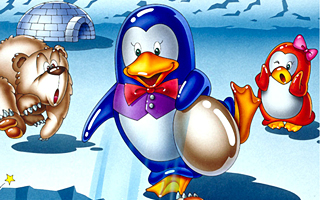
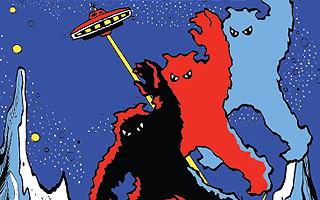
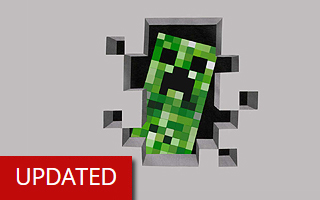
Do you agree with this list? Let us know what you think by leaving a comment below. Your opinion matters!